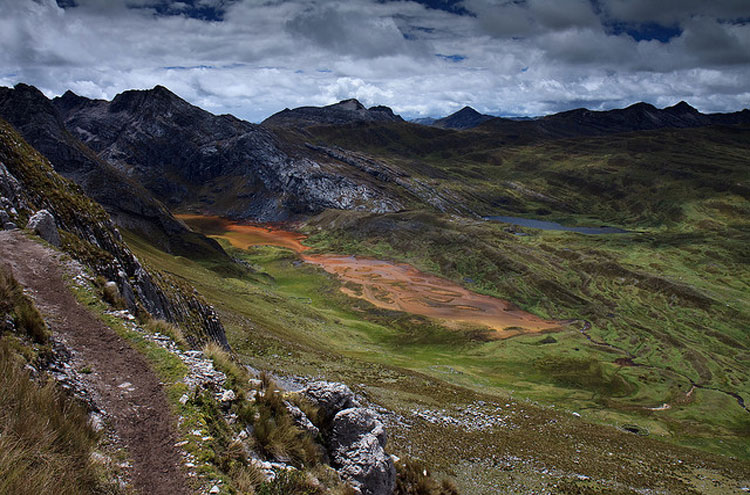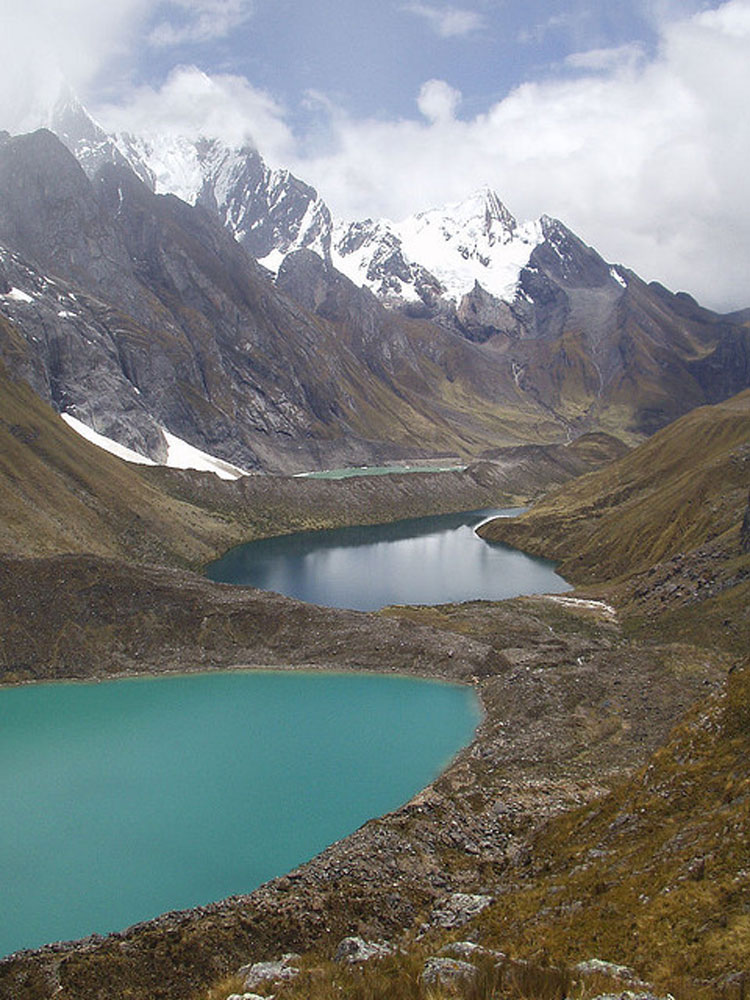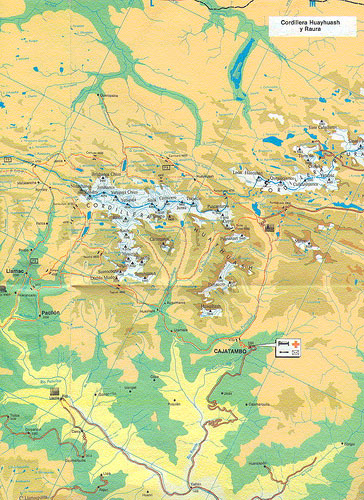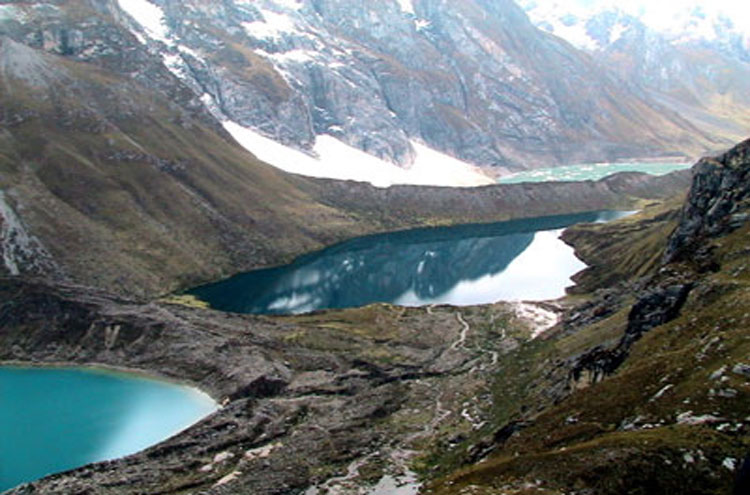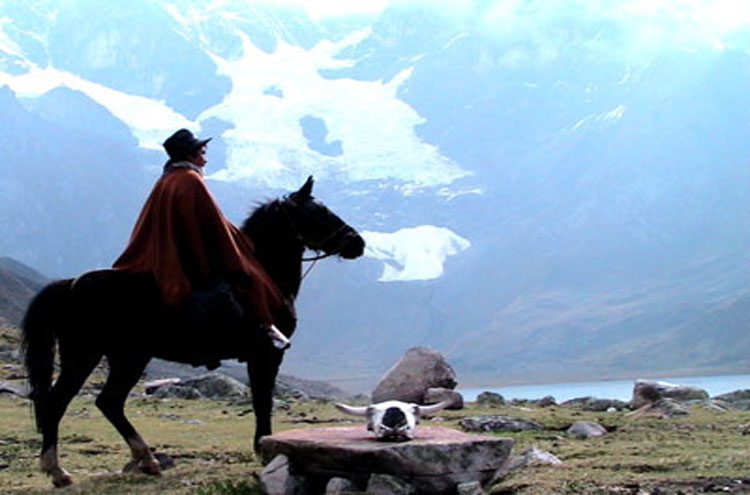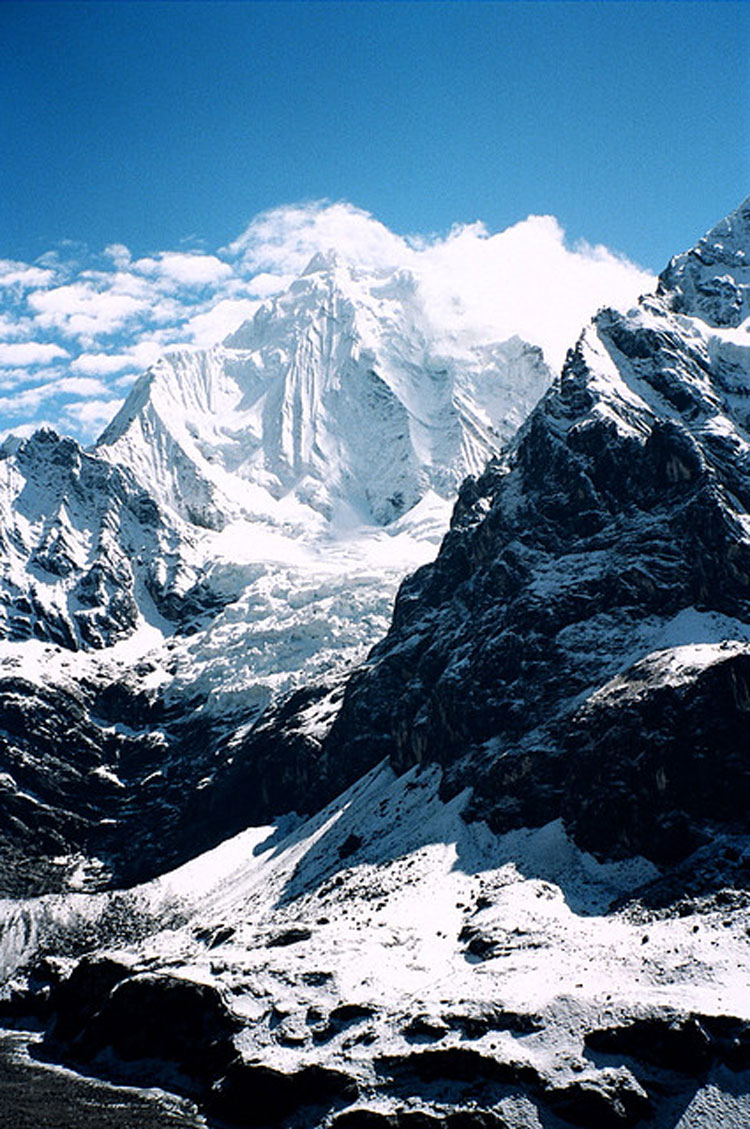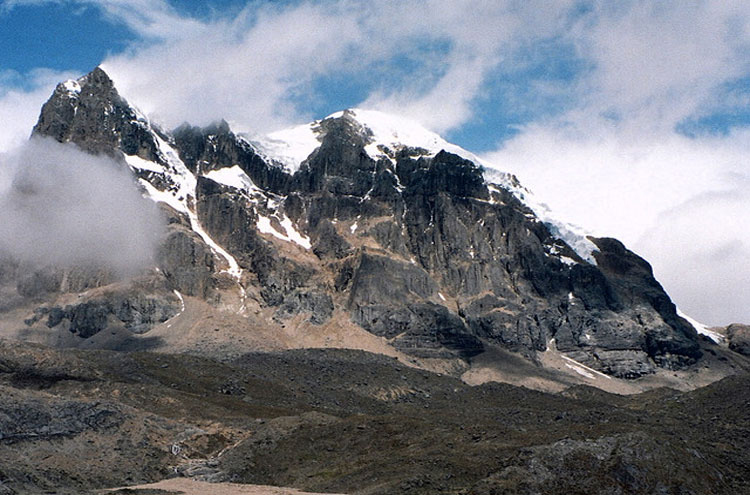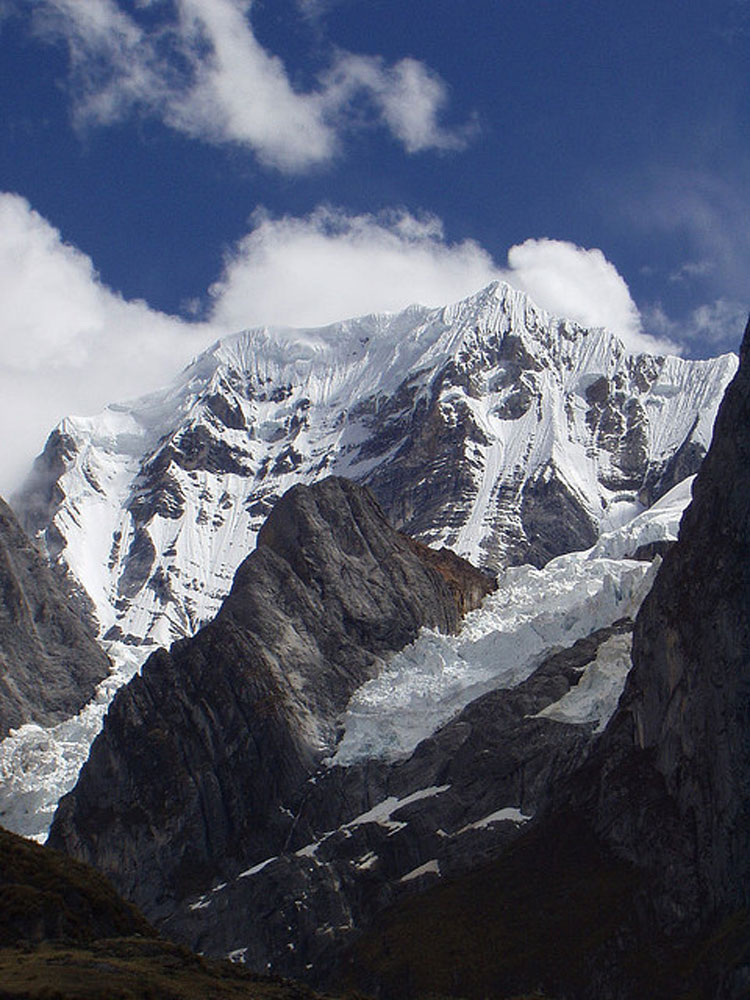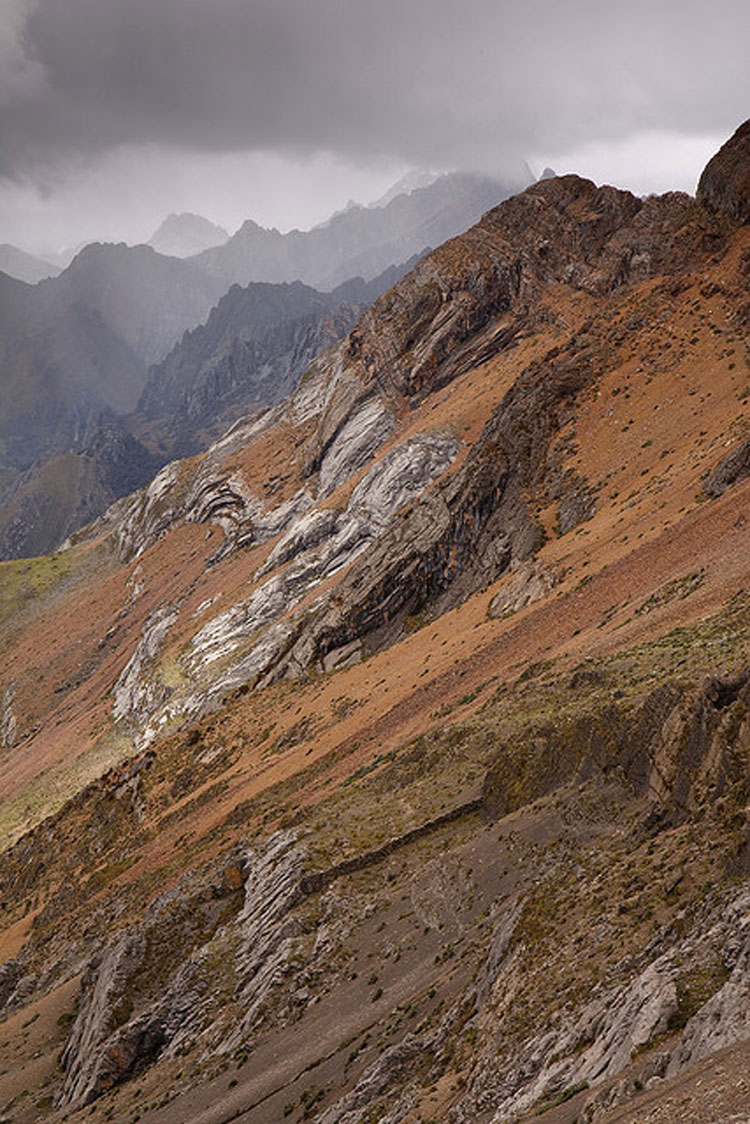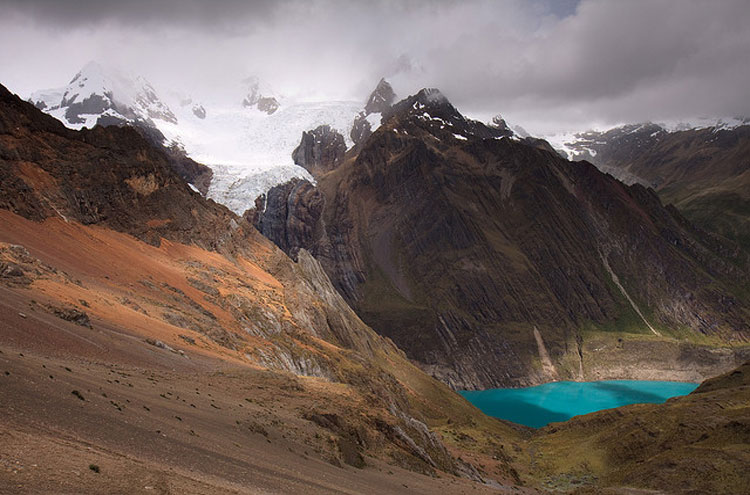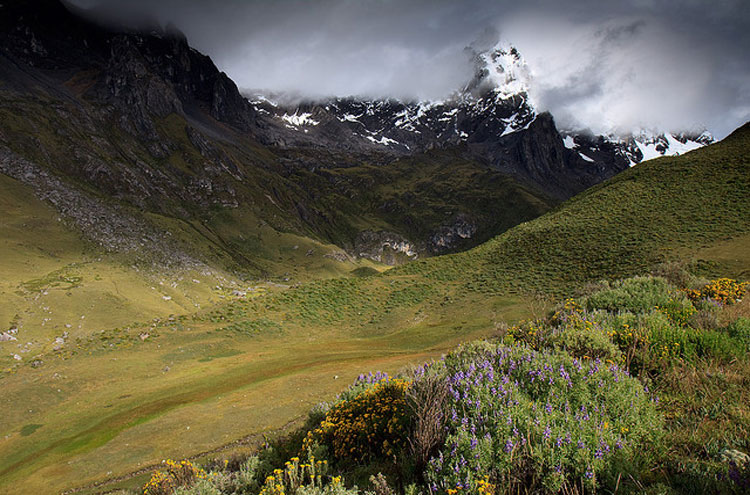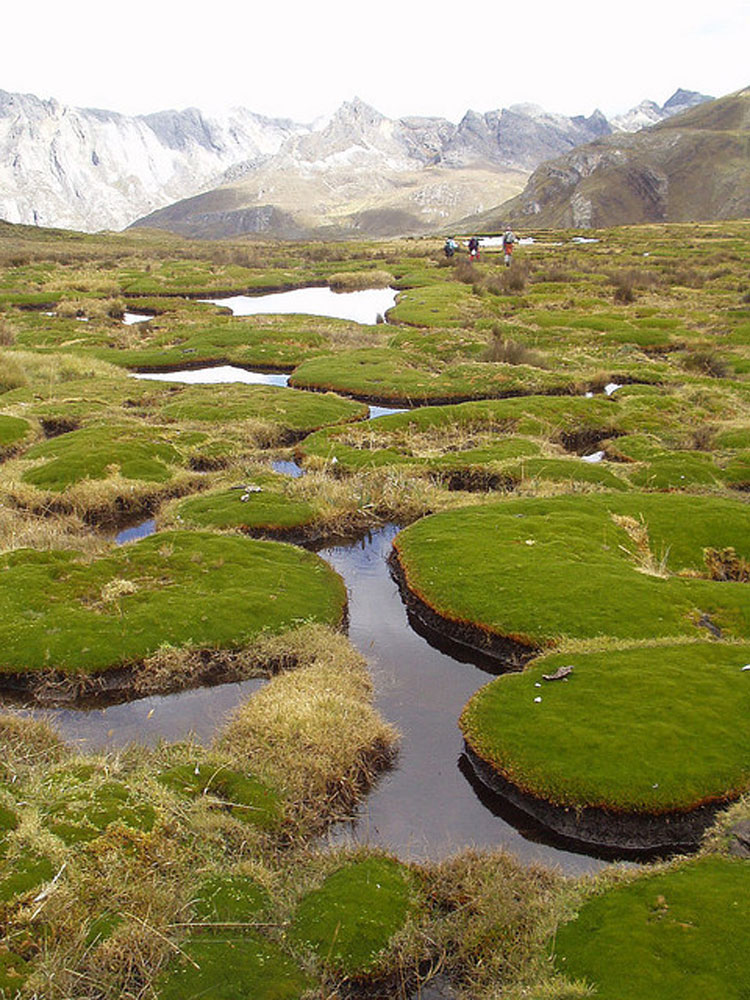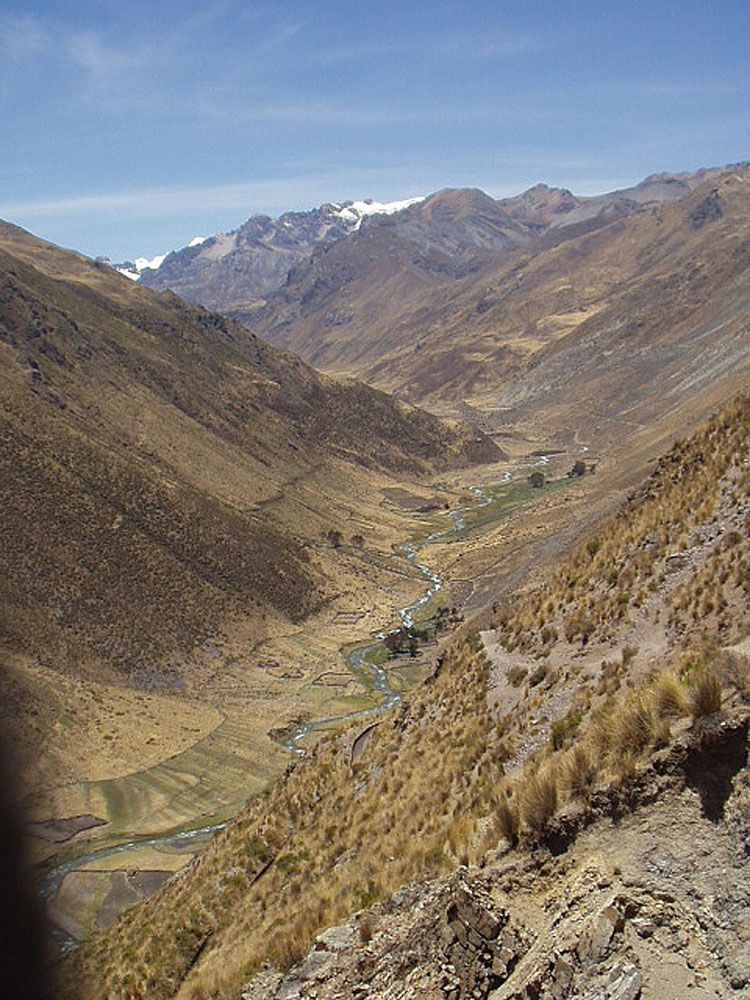Huayhuash Circuit
Key information: Huayhuash Circuit 
- Trek through a gorgeous wilderness of glaciers, colourful lakes, grasslands and deep valleys, under the magnificent peaks of one of South America’s most beautiful ranges.
Walkopedia rating
(Top 100)
- Walkopedia rating91
- Beauty36
- Natural interest16
- Human interest6
- Charisma35
- Negative points2
- Total rating91
- Note: Neg: altitude
Vital Statistics
- Length: 100-170 km
- 8-12 days
- Maximum Altitude: 4,950m
- Level of Difficulty: Difficult
This walk description page is at an early stage of development, and will be expanded over time. Your comments on this walk, your experiences and tips, and your photos are very welcome.
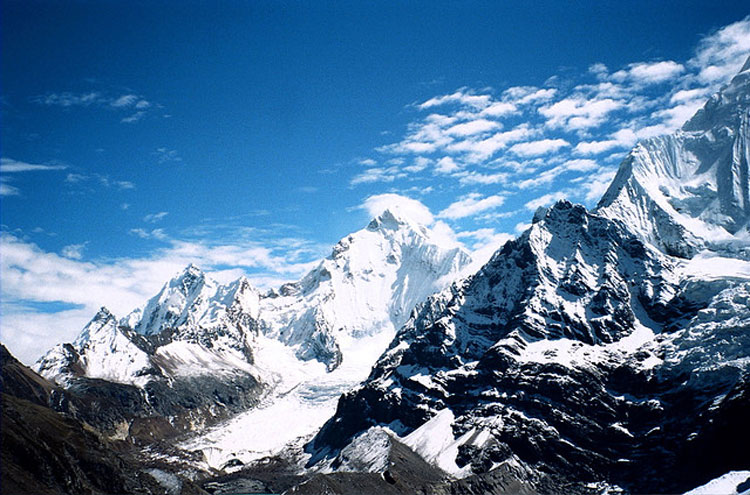
WALK SUMMARY
The soaring, icy, serrated Cordillera Huayhuash of northern Peru is one of South America’s most beautiful ranges. Trek through a gorgeous wilderness of glaciers below vast cliffs and spikes, colourful lakes (especially along the eastern flank), grasslands and deep valleys, under the magnificent peaks of this superb range.
The Huayhush are tightly packed, long(ish) but narrow (30km east to west), looming magnificently over the surrounding undulating grasslands. They include Peru’s second-highest mountain (Yerupaja, 6,634m).
The wildlife is amazing and varied, from condors to (rare) puma to mountain cats, as is the flora — mainly shrubs and grasslands, but some pockets of forest of dark, reddy-barked quenua forest.
Meet highland herders and (on a couple of occasions) villagers. The west face of Siula Grande (and the glacier below it) are famous for the tale of horror-endurance told in Joe Simpson’s Touching the Void.
Most people nowadays circuit the range clockwise from Llamac, in the north-west. There are plenty of variants which cater for your appetite for hard work and your available time, so distances vary (100-170 km), as does timing (8-12 days). This is a long, tough walk in high, remote mountains, on which you will have to be self sufficient and where altitude can cause real problems. Come prepared.
Our friend Charles Bookman says:
“Huayhuash: The Most Beautiful Trek in the Andes
Why the Huayhuash? As my friend Roger put it, “You are out there and you are in it.” Walking 95 km (55 miles), we spent eleven days and nights at altitudes of 4,000-5,000 meters (13,000-16,000 feet) surrounded by snow-capped giants of the earth—the peaks of the Huayhuash soar over 6,000 meters (over 20,000 feet). The entire hike is above the tree line, so you see forever. From the mountain passes, the glaciers roar up close and personal. Limpid lakes dot the valleys, and birds, notably Andean geese on the lakes and condors on the cliffs are ever present.
Cattle and sheep graze the high grasslands and we encountered at least one herd of alpaca. Families tend the herds, so encounters with the locals are common. Many women still wear distinctive multi-layered skirts and tall hats, while the men dress like the cowboys that they are. Quechua is their first language, but most speak Spanish as well. We got by just fine with our transactional Spanish, exchanging pleasantries with the locals, asking for directions and talking about the weather.
The Huayhuash trek deserves to be on every trekker’s bucket list. It is not easy to get there, but the scenery and the journey are well worth the effort.
Logistics
Huaraz, the nearest city and the jumping-off point for the Huayhuash, is nine hours by bus from Lima. Fortunately, Cruz del Sur runs a luxury non-stop bus service that rivals airline comfort. We were so excited during the bus ride that the nine hours flew by along with the scenery.
The air is thin in the Andes. We spent four days acclimatizing in and around Huaraz to make sure we didn’t have altitude complications on our trek. We acclimatized as follows:
Day 1: day hike to Laguna Wilcacocha, a fine viewpoint near Huaraz.
Day 2: visit Chavin ruins. We took an all-day commercial tour to the Chavin ruins. The Chavin culture predates the Incas by nearly 3,000 years. The Chavin archaeological site, actively being excavated, includes ceremonial plazas and an extensive tunnel system.
Day 3: hike to Laguna Churup. Much steeper and longer than the Wilcacocha hike, to a magnificent lake tucked into the base of dramatic Nevada Churup at over 4,300m.
On the fourth day, we hired a van to drive us 5½ hrs to the Cordillera Huayhuash.
Carrying day packs, we hiked six to sixteen kilometers a day. Most days we climbed over a mountain pass, so daily elevations ranged from 250m (800ft) to 800m (nearly 3,000ft). While these statistics may not seem challenging to experienced trekkers, all effort was expended between 4,000-5,000m (13,000-16,000ft), where the air is thin. A typical day began at 7:30 am and ended with a late lunch about 1:30 pm. That left the afternoon for soaking in the sun, swimming in nearby lakes, or walking more hills for different perspectives on the nearby, ever present snow-capped peaks.
(See Charles’ thoughts below on practicalities.)
Our cook Teo took good care of us. Breakfast consisted of porridge or pancakes. Lunches featured soup. Tea and snacks appeared in midafternoon. Soup appeared again at supper, along with meat or fish, and potatoes.
Teo began his day at 4:30am boiling a huge vat of water. His valiant efforts to keep us healthy proved fruitless, as water boils at a much lower temperature at altitude, 84.5 deg. C (184 deg. F) at 4500m (15,000ft); thus sometimes the drinking water was less than sterile. There is also the burro problem. Where there are lots of animals, there is lots of dung, and where you have lots of dung, then harmful bacteria can be a problem. Three of our number suffered from Atahualpa’s revenge on the trail. Fortunately, with the usual medicines, the attacks cleared up in a day or two, but keeping everyone healthy, and adapting our itinerary to accommodate everyone’s physical condition were important factors in trip planning.
(Note: when one person’s intestinal problems persisted, we abandoned plans to visit the site of Simon Yates’ and Joe Simpson’s dramatic “Touching the Void” experience. https://www.google.com/search?q=touching+the+void+summary&oq=touching+the+void&aqs=chrome.3.69i57j0l5.5117j0j4&sourceid=chrome&ie=UTF-8).
We opted instead to drop down to the remote village of Huayllapa, where we found a government nurse. With the nurse’s help (and medicine) our ailing team member bounced back quickly.)
The Trek
We crossed nine mountain passes on our 11-day trip, walked 95km (55mi.), and climbed about 4,700m (15,000ft). We began an hour above Llamac village at Quartelhuain trailhead and finished at the village of Llamac. A typical day involved scaling a mountain pass and then following a valley to a lake or a riverside campsite. Wide-open vistas framed snow-capped peaks. Sometimes the peaks were far away. At other times, they were in our face. The giants, Yerupaja, Siula Grande and the others became friends as we walked around them and got to know them from all sides. The giants were restless, especially at night. More than once, we woke to the sound of alpine glaciers shedding tons of ice, which cascaded down steep slopes to debris fields below.
The campsites are expansive, with room for the donkeys to graze. Every camp we stayed at had a rudimentary privy, some with running water. Some were eastern-style, requiring “Hole in one” target practice; others were equipped with toilets (but never seats).
Most hike the Huayuash circuit clockwise. In addition to the main route (see map), there are alternative or alpine routes. The alternatives are more challenging, some are downright obscure, but this is territory for mountaineers. You would not be in the Huayhuash unless you sought a challenge, so explore to your heart’s content. Carry a good map. You may wander, but you will never get lost."
Walkopedia says thank you, Charles!
See Charles’ detailed description of his trek below. And see his entire, illustrated article here.
This page needs more work. Please help us by making suggestions and sending photos! Thank you!
OUR FRIENDS' EXPERIENCES
Other accounts
Our friend Charles Bookman has described his walk as follows (thank you Charles!).
Day 1:Qurtelhuain to Mitucocha camp. 8km (5mi.), 550m (2,000’). The trail climbs steeply to Cacananpunta (4700m (15,300ft)), then descends into a broad valley to meet the Rio Janca, which it follows up to Mitucocha camp. The camp hugs the edge of a marshy plain about a mile below Laguna Mitucocha. The lake is an easy thirty minute stroll from the camp. Nevada Jirishanka and Rondoy dominate the sky above the lake.
Day 2: Mitucocha to Laguna Carhuacocha, 10 km (6mi.), 350m (1200ft). The route ambles uphill to a pass, Carhuac Yanapunta, then continues down to the camp beside gorgeous Laguna Carhuacocha. Jirishanka and Yerupaja dominate the view at the end of the lake. Siula Grande is off to the left, visible after walking around the lake. This is an easy, straightforward day with a wonderful reward (the lake) at the end.
Day 3: We took a rest day by the lake in the hopes that a sick party member would recover (it didn’t work). We weren’t idle, though, opting to walk up the lake to the territory of the “Three lakes”. A marvelous, well-signed viewpoint (mirador) just above Laguna Siula made a perfect lunch and turnaround spot.
Day 4: Carhuacocha to Huayhuash. 13km (8mi), 800m (2,600ft). There is a choice of routes on this leg. The burros take a longer but easier route over Punta Carnicero. Most trekkers opt for the more scenic “three lakes route.” This path takes you up close and personal.....
READ MOREYour comments on this walk, your experiences and suggestions, and your photos are very welcome. Where appropriate, you will be credited for your contribution.
We have a lot of helpful practical information and tips about this walk, covering everything from the best books and maps, to timing and weather, geting there, possible problems, whether you need a guide and where to find them, and useful websites. This section is only open to members.
Membership is FREE AND JOINING TAKES 30 SECONDS. To login or sign up click here
Safety and problems: All walks have inherent risks and potential problems, and many of the walks featured on this website involve significant risks, dangers and problems. Problems of any sort can arise on any walk. This website does not purport to identify any (or all) actual or potential risks, dangers and problems that may relate to any particular walk.
Any person who is considering undertaking this walk should do careful research and make their own assessment of the risks, dangers and possible problems involved. They should also go to “Important information” for further important information.
Anyone planning an expedition to this place should see further important information about this walk.
Safety and problems: All walks have inherent risks and potential problems, and many of the walks featured on this website involve significant risks, dangers and problems. Problems of any sort can arise on any walk. This website does not purport to identify any (or all) actual or potential risks, dangers and problems that may relate to any particular walk.
Any person who is considering undertaking this walk should do careful research and make their own assessment of the risks, dangers and possible problems involved. They should also go to “Important information” for further important information.
COMMUNITY COMMENTS AND PHOTOS
Name: cyffredinol
Posted on: 04/09/2012
The Huayhuash trek is long, strenuous, and wild. Every day you will cross a pass between 4600 and 5000 meters. Every campsite is above 4000 meters, usually around 4300 meters. The views are outstanding, the best I have seen anywhere. Dramatic peaks and beautiful glacial lakes. The downsides: the nights are long (since the trekking season (the dry season) is during Peru's winter), and very cold, and the trail, like every trail I walked in Peru, is in poor condition from being very heavily used by people and burros. Nonetheless, this is a spectacular trek and certainly my favorite.
Name: Mountains
Posted on: 21/06/2014
The fantastic ice range of the Cordillera Huayhuash is renowned for knife-edged 20,000-foot peaks that attract mountaineers from around the world. Seven of Peru's highest peaks rise from this dramatic massif, whose awesome beauty can be seen in the gripping adventure film Touching the Void. Our challenging 14-day trek crosses seven high passes as we circle the entire range, with nearly continuous panoramas of towering Andean giants, including Yerupaja (21,759'), second highest mountain in Peru. Our adventure culminates in an optional climb of Diablo Mudo (17,235'), a non-technical snow peak with panoramic views across the entire Huayhuash. Sunny blue skies, mild daytime temperatures, and a profusion of edelweiss and purple lupine make these mountains an alpine paradise. more info www.peruvianmountains.com
Name: Administrator
Posted on: 28/10/2014
Peter Beverley says:
�Cordillera Huayhuash in Northern Peru. This is much more remote and untrodden than the Inca Trail, even the marvellous Salkantay. It includes all the great mountains like the 6700m Huascaran and the perfectly shaped Alpamayo. We did a strenuous but very doable five-day hike and saw only two other climbers who were headed for Huascaran itself (but that was in 1983). Going to Huaraz to start the walk you go past Yungay, a village wiped out in an earthquake and avalanche in the 70s, which killed 20000 people and is still a huge gash across the landscape.�
OTHER ACCOUNTS
share your experiences
Add your experiences, suggestions and photos. We would be delighted to receive your writing and ideas (which will be attributed appropriately where published).
Anyone planning an expedition to this place should see further important information about this walk.
Responsible travel matters, a lot. How you travel will make a real difference - for better or worse. PLEASE consider this when making plans. Read more



